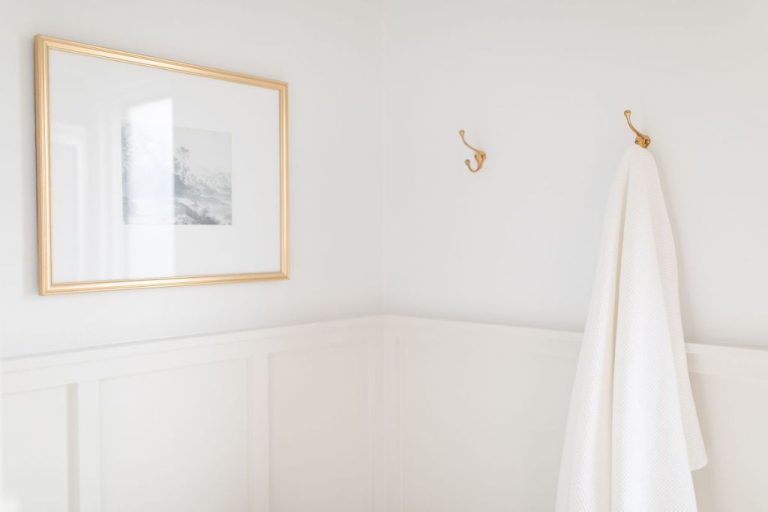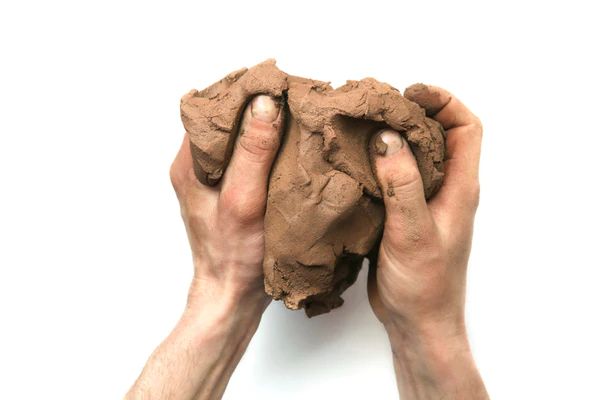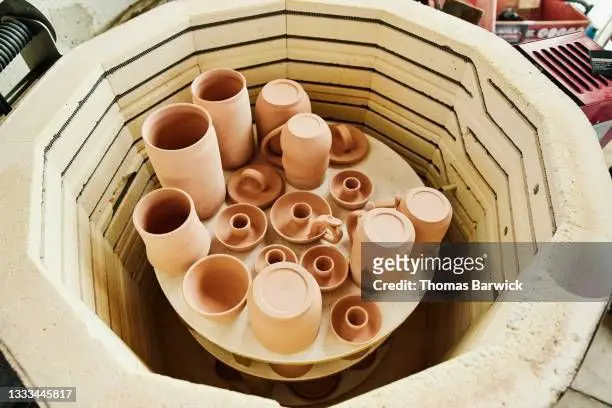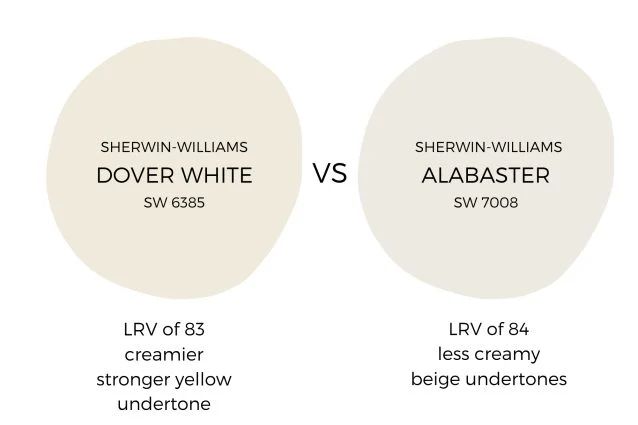What Is The Best Flooring For Clay Studio?
Choosing the right flooring is one of the most important decisions when setting up a clay studio. The flooring material needs to be able to withstand the demanding environment of a working ceramic studio. There are several key factors to consider when selecting flooring for a clay workspace:
Durability – The floor must be extremely durable to resist damage from heavy furniture, dropped tools, and constant foot traffic. Tile and concrete floors are very resilient options.
Stain Resistance – Clay staining is inevitable, so the flooring should be easy to clean and stain-resistant. Vinyl and linoleum are good choices.
Slip Resistance – Floors can become slippery when wet from spills or cleaning. The flooring needs traction to prevent slips and falls. Concrete with a broom finish provides grip.
Comfort – Standing for long periods can be tough on the feet and back. Cushioned vinyl and rubber mats add comfort.
Noise Reduction – Loud ceramic work can cause fatigue. Sound-dampening floors like carpet help absorb noise.
Cost – Budget is always a consideration. Vinyl and linoleum are relatively affordable options.
Aesthetics – The look of the floor impacts the overall studio aesthetic. Polished concrete has an attractive, industrial look.
By evaluating these key factors, ceramic artists can select the ideal flooring to meet their studio needs.
Durability
When choosing flooring for a clay studio, durability is a top concern. The flooring must be able to withstand heavy foot traffic, dropped tools, cleaning chemicals, and constant wear and tear (Best Flooring for Arts & Crafts Rooms). Tile, vinyl, and concrete floors tend to be the most durable options.
Tile is an extremely durable material that can handle the heavy usage of a clay studio. The hard surface resists scratches, stains, and dents from dropped items. Unglazed quarry tile and porcelain tile are good choices as they are less prone to cracking or chipping than ceramic (6 Art Studio Flooring Tips for DIY Artists on a Budget).
Luxury vinyl plank flooring is also highly durable and able to withstand studio conditions. The dense composite core makes it very resistant to damage. Vinyl floors are scuff, stain, and moisture resistant while providing cushioning underfoot (Art Studio Flooring Ideas You Can Take Inspiration From).
Sealed concrete offers durability along with an industrial look. The hard surface holds up well to heavy impacts, dropped objects, and constant cleaning. Concrete is also fire-resistant and prevents the growth of mold or mildew.
Stain Resistance
When choosing flooring for a clay studio, stain resistance is a top priority. Clay, glazes, and paints can easily stain flooring if spilled or dropped. Some of the most stain resistant options include:
Tile and stone floors like porcelain or ceramic tile are very stain resistant, especially when sealed properly. According to this source, porcelain tile ranks high in stain resistance and durability. The dense surface prevents stains from penetrating the tile.
Vinyl flooring, especially luxury vinyl plank, is also highly stain resistant. The layered construction creates an impervious surface that prevents stains from absorbing into the flooring. Vinyl is a waterproof material that holds up well to spills and drips.
Epoxy floors provide excellent stain resistance due to their durable, non-porous surface that prevents absorption. They are commonly used in commercial and industrial settings like labs and warehouses. Epoxy coatings come in various colors and finishes.
No flooring is 100% stain proof, but choosing an ultra-dense material like porcelain tile or vinyl will provide the best stain resistance for a clay studio environment.
Slip Resistance
Working with clay often involves moisture, whether it’s from wet clay, water for smoothing surfaces, or cleaning up spills. Having floors with good grip and traction is crucial for safety and preventing slips and falls in a clay studio.

There are several slip-resistant flooring options well-suited for wet, messy workspaces like clay studios. Popular choices include urethane cement floors, rubber floors, specialty tile with grip patterns or textures, and even painted concrete with anti-slip additives mixed in.
Urethane cement floors like those offered by Elite Crete Systems provide excellent traction and are seamless, making them easy to clean. They come in various colors and can have grip particles like aluminum oxide added for even more slip resistance (source).
Poured rubber floors from brands like SnapSports are another great option, as the material has naturally high friction. The flexibility of rubber also makes it comfortable underfoot. They’re available in rolls or interlocking tiles (source).
Grip tape, textured patterns, or abrasives can also be added to standard ceramic and porcelain tiles to transform them into slip-resistant surfaces perfect for messy craft studios like those working with clay. A product like Saf-T-Grip adds grip while maintaining easy cleanability (source).
Comfort
When choosing flooring for a clay studio where people will be standing for long periods of time, it’s important to select a material that offers adequate cushioning and shock absorption. Hard surfaces like tile, stone, and concrete can be very unforgiving on joints and feet when standing on them all day. Softer surfaces like carpet, cork, and vinyl are better choices for comfort.
According to an article on 50floor.com, vinyl is one of the most recommended floorings for comfort because it has some “give” and flexibility (https://50floor.com/blog/flooring-easy-on-feet-joints/). Vinyl is available in sheet, tile, and luxury plank formats. It provides a decent amount of cushioning thanks to its resilient backing. Vinyl flooring is also quite affordable compared to other options.
Carpeting offers the most comfort out of any flooring type thanks to its plush, padded construction. It absorbs shock and reduces strain on feet, knees, hips, and back (https://www.goodhousekeeping.com/home/renovation/a40617015/best-flooring-guide/). However, carpeting can be more difficult to clean and maintain in a busy studio environment.
Noise Reduction
Sound dampening is an important consideration for a clay studio floor. Glazing and throwing clay can be noisy activities, so choosing a flooring material that helps absorb sound is ideal.
Some of the best options for sound dampening flooring include:
- Carpet tiles – The padding in carpet tiles helps absorb noise and impact sound. Carpet tiles are easy to install and replace as needed in high-traffic areas (Source).
- Vinyl plank flooring with foam or textile backing – The foam or textile layers underneath vinyl flooring help reduce noise from footsteps and dropped items. Look for vinyl floors rated for high sound absorption (Source).
- Rubber flooring or fitness mats – Rubber naturally dampens sound vibrations. Interlocking rubber tiles provide sound dampening along with comfort underfoot.
In general, softer flooring materials like carpet, rubber, foam, or cork tend to absorb the most noise. Hard surfaces like tile or wood amplify noise. Look for sound ratings when choosing studio flooring and test samples to find the quietest options.
Easy to Clean
Cleaning and maintenance are key considerations for an art studio floor. Clay, paints, glazes, and other art mediums can create messy spills that are difficult to remove. The ideal studio flooring should be easy to sweep, mop, and clean stains from.
Vinyl plank flooring is a top choice because it is waterproof and provides a seamless surface that prevents spills from seeping underneath. Mops and brooms easily sweep debris off the nonporous vinyl material. According to Greatmats, vinyl plank flooring can be scrubbed clean without retaining stains or requiring waxing/stripping.
Tile and stained concrete are other good options as they allow quick mopping and debris pickup. However, grout lines can collect stains over time. Epoxy coated concrete is ideal since it creates a seamless, nonporous surface that wipes clean easily.
Cost
When choosing flooring for a clay studio, cost is an important consideration. Some budget-friendly options include:
Vinyl composition tile (VCT) typically ranges from $3.99 to $5.99 per square foot installed (Source). VCT is affordable, durable, and easy to clean.
Carpet tiles start around $1 per square foot for basic styles and go up to $4 or $5 per square foot for premium options (Source). Carpet tiles can be replaced individually as needed.
Sheet vinyl is an economical option at $1 to $2 per square foot installed (Source). It’s waterproof and easy to clean.
Concrete can be stained or painted for a low-cost flooring solution. Prep work is key to ensure proper adhesion of coatings.
Choosing low-cost flooring for high traffic areas helps balance durability and affordability in a clay studio.
Aesthetics
The aesthetics of your studio flooring play an important role in creating a visually appealing and creative workspace. Many artists prefer flooring options that are smooth, seamless, and have an industrial or modern look. Options like polished concrete, stained concrete, and vinyl plank flooring give a sleek, gallery-like appearance. Wood flooring can provide visual warmth, but requires more maintenance. Cork flooring offers an organic, natural look. Whatever option you choose, consider how the flooring’s color, texture and style impacts the overall aesthetic of your studio space. The visual environment directly affects your creative inspiration, so choose flooring that energizes and motivates you.
As noted in this article on art studio flooring ideas from Fine Art Shippers, “The right flooring solution can turn a regular room into a professional art studio.” https://fineartshippers.com/art-studio-flooring-ideas-you-can-take-inspiration-from/ Selecting flooring with visual appeal transforms your clay studio into an artistic haven that fuels your creativity and productivity.
Conclusion
When choosing the best flooring for a clay studio, there are several important factors to consider. Durability and stain resistance are critical, as clay can be rough on floors. Slip resistance is also key, to prevent falls on wet or dusty floors. Comfort underfoot can make long hours at the wheel more enjoyable. Noise reduction helps maintain focus in a shared studio. Ease of cleaning will keep floors fresh. Aesthetics shouldn’t be overlooked either, as an attractive floor can inspire creativity.
Based on these criteria, the top options for clay studio floors are sealed concrete, stained concrete, poured epoxy, tile, and rubber gym flooring. Sealed and stained concrete offer durability at a reasonable price. Poured epoxy creates a seamless, glossy look that’s easy to clean. Tile resists stains and can be decorative, but the grout requires sealing. Rubber gym flooring provides comfort underfoot and sound absorption. Each option has pros and cons to weigh according to your specific needs and budget.
The most critical factors are likely durability, stain resistance, slip resistance, and ease of cleaning. By thoughtfully evaluating how flooring choices meet these practical needs, ceramic artists can choose a studio floor that supports creativity while standing up to the demands of working with clay.




